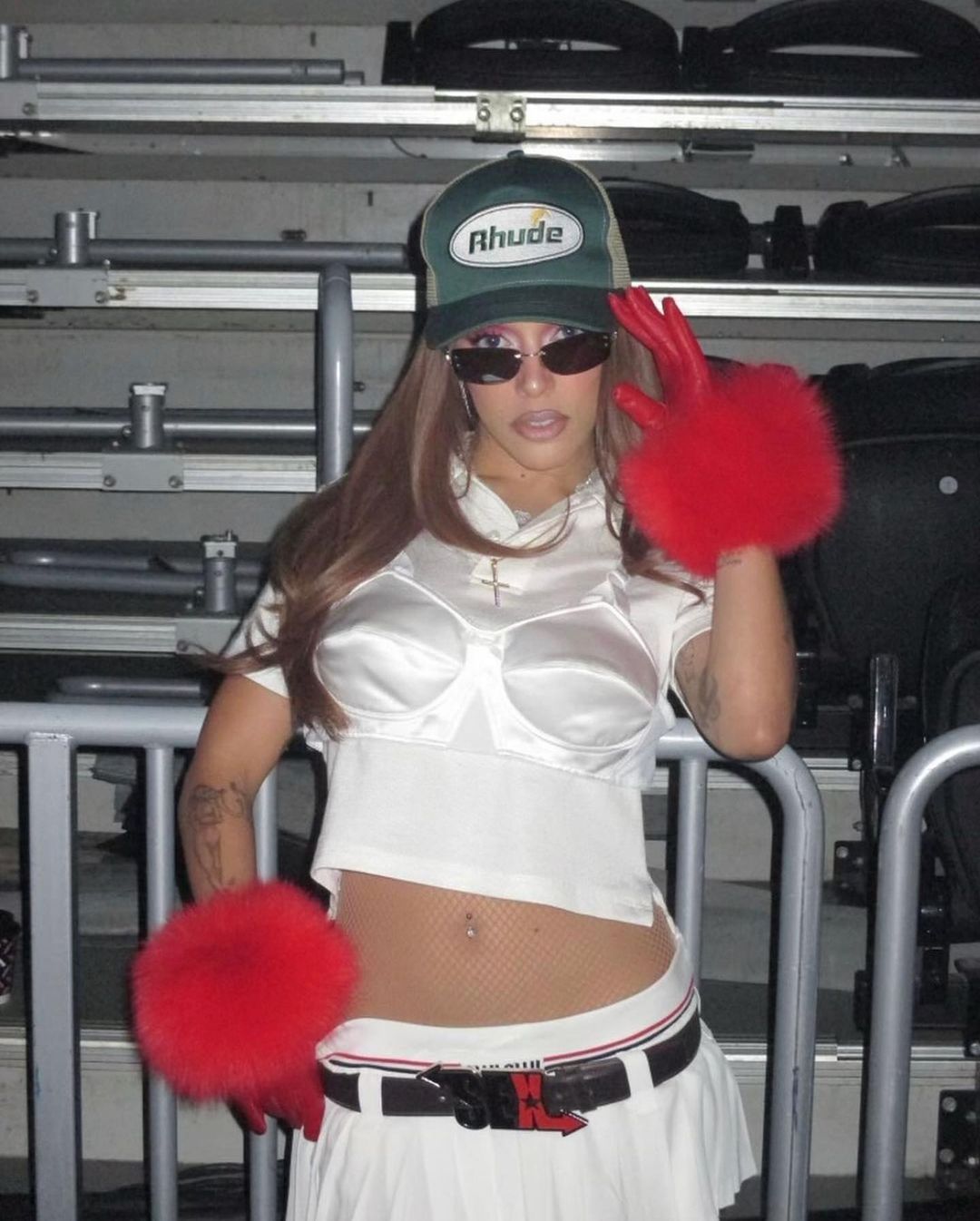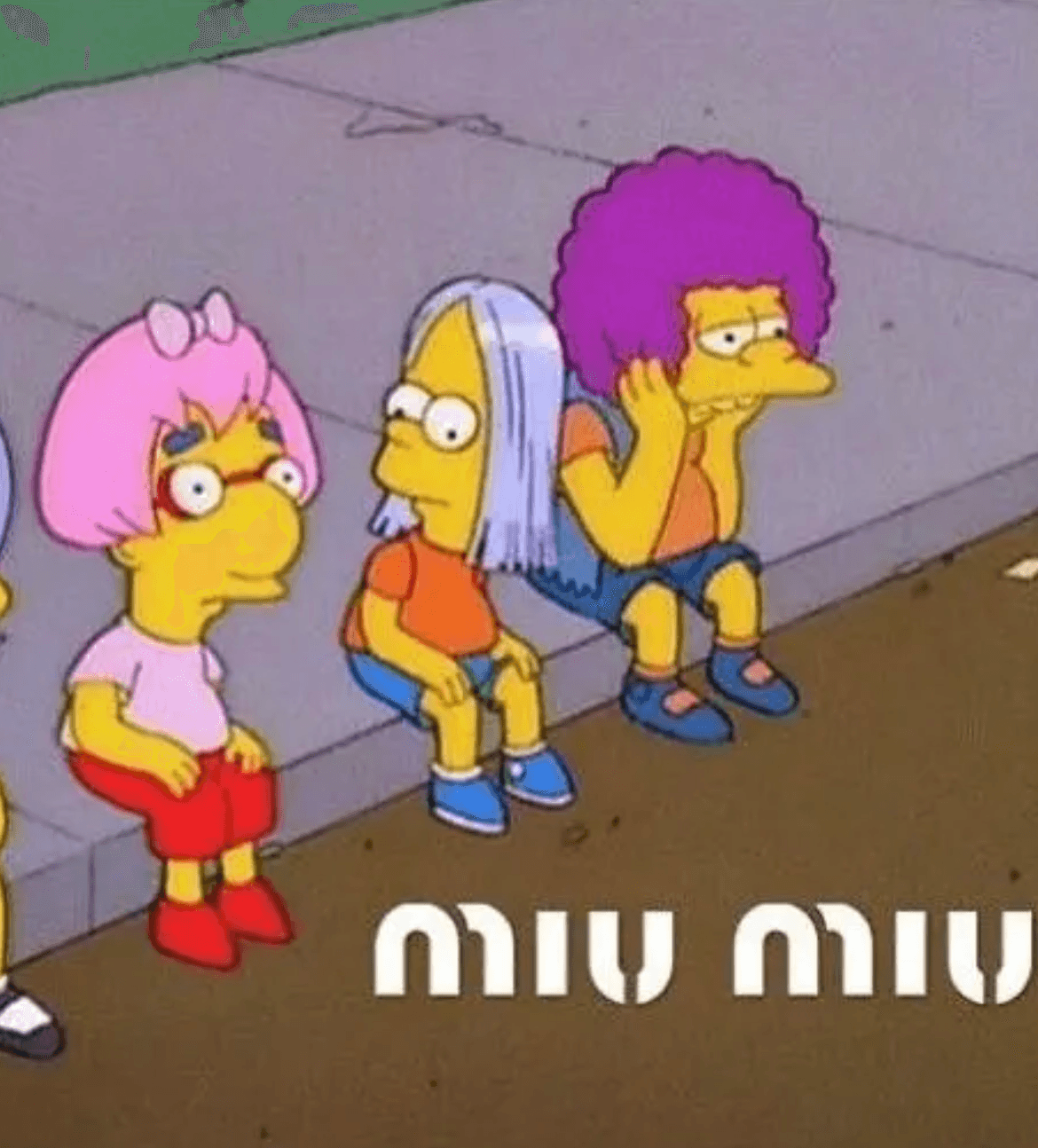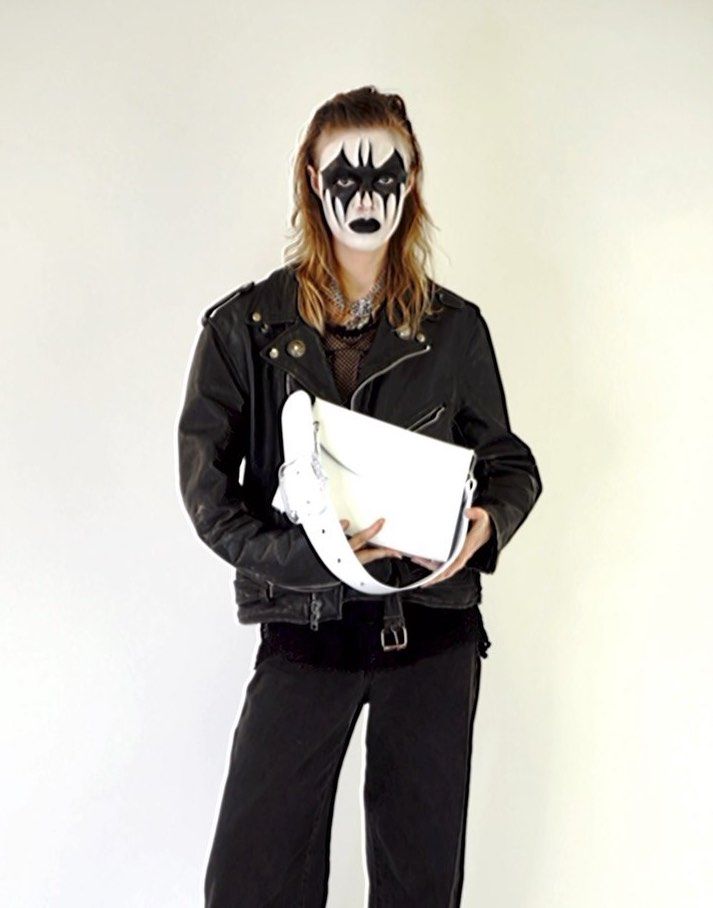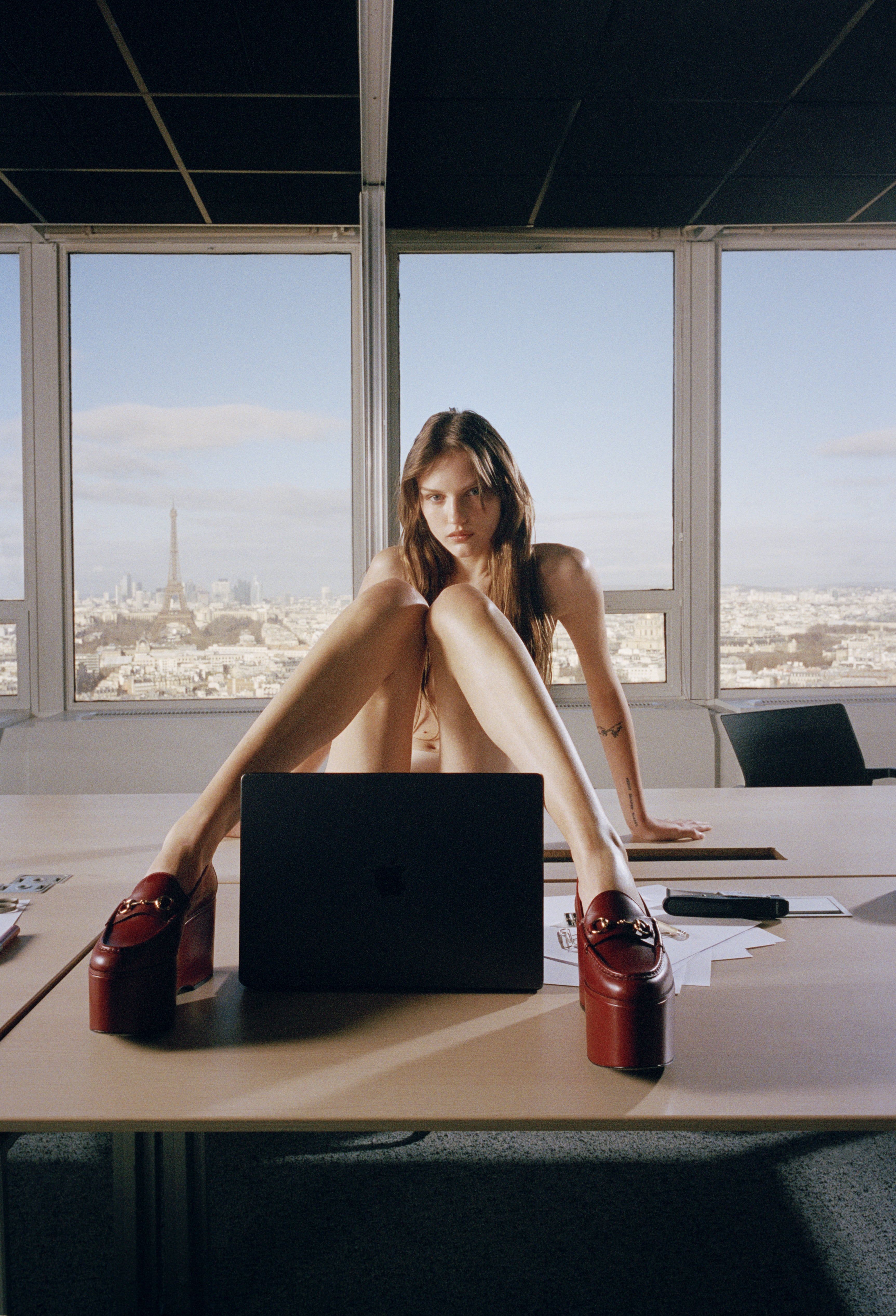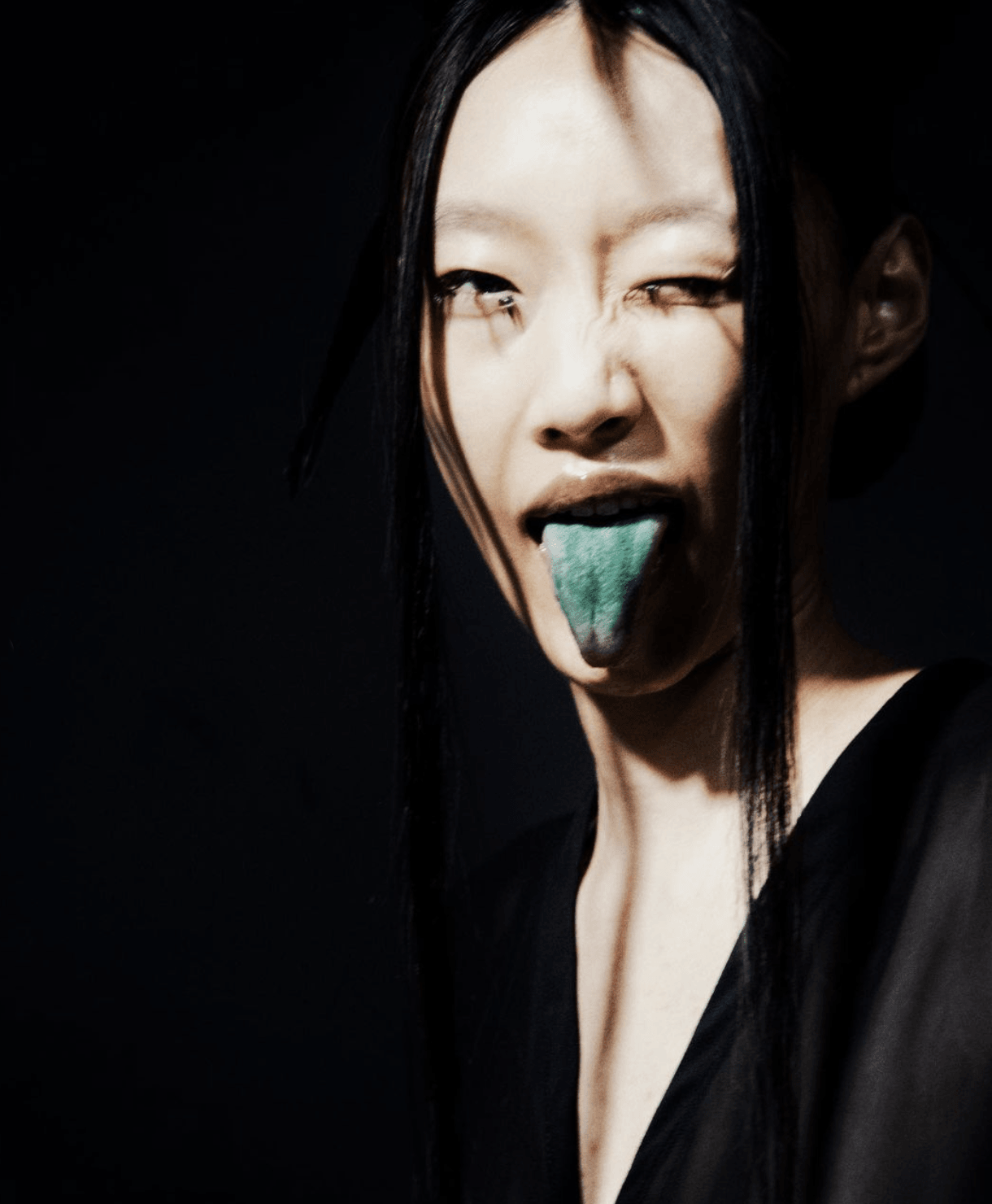Lifesaving and Poisonous: Women’s History Museum
|PHILLIP PYLE
If only by virtue of their name, Women’s History Museum has been bewildering fashion and art crowds since 2014.
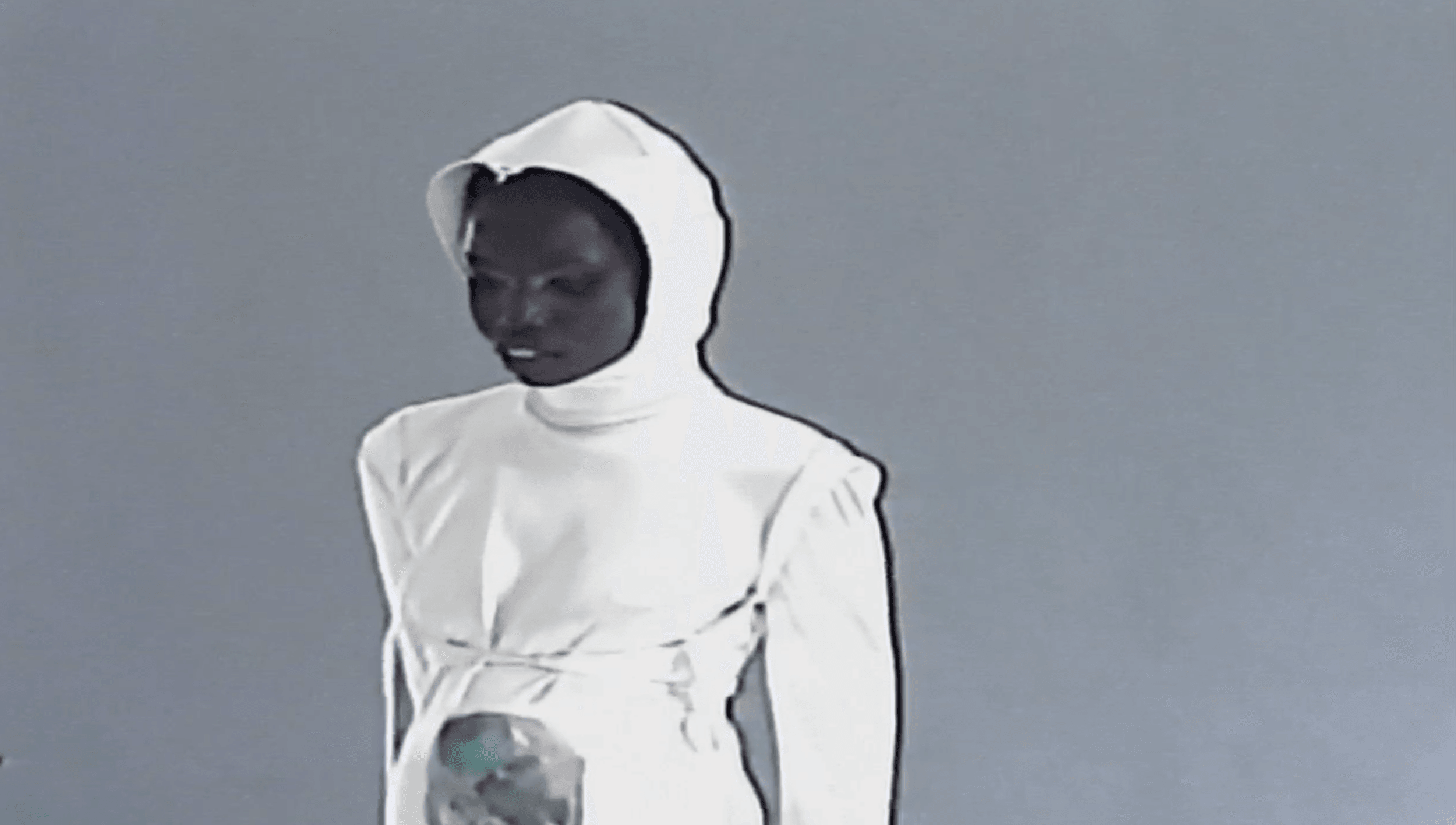
Now that they have a physical store, that confusion extends to Canal Street tourists, who, upon walking up the stairs to the second-floor space of clothing racks and mannequins, ask the seemingly rhetorical question: “Is this the museum?”
According to Amanda McGowan and Mattie Barringer, the minds behind Women’s History Museum, “even youngsters that you presume are more internet savvy” are thrown off by the name for the art project, fashion label, and vintage store in Chinatown. The name both alludes to the typical exclusion of fashion in museums—largely because of fashion’s association with femininity—and to their own personal history, as they referred to the cramped bedroom closet they once shared as “the museum.” McGowan and Barringer have now been deconstructing and piecing back together the codes of fashion history under this moniker for nearly a decade, working across sculpture, film, drawing, performance, painting, and photography. Having shown their designs in both gallery settings and on the runway, Women’s History Museum engages both worlds in unorthodox ways, and often with a no wave attitude.
Their most recent NYFW show and seventh collection, Enfer, served as an impassioned homage to New York City and a denunciation of it. Screen-printed rats squirmed up and down an asymmetrical space-age ensemble, butterflies flew in veils adorning models’ heads, the Chrysler and Empire State Buildings appeared as sisters on dresses, Mad Max-esque gladiators wielded plush shields, and animal prints (and meat sections) abounded in a show ultimately about the beauty and struggle of life in the city.
Before combing through the irresistible collection of Vivienne Westwood, Bernhard Wilhelm, Obscure Desire of Bourgeoisie, and other rare and antique pieces for sale, I sat down with Amanda McGowan and Mattie Barringer at Women’s History Museum Vintage to discuss their views on the past, the interaction between their business and design and art practices, and fashion as an inescapable obsession.
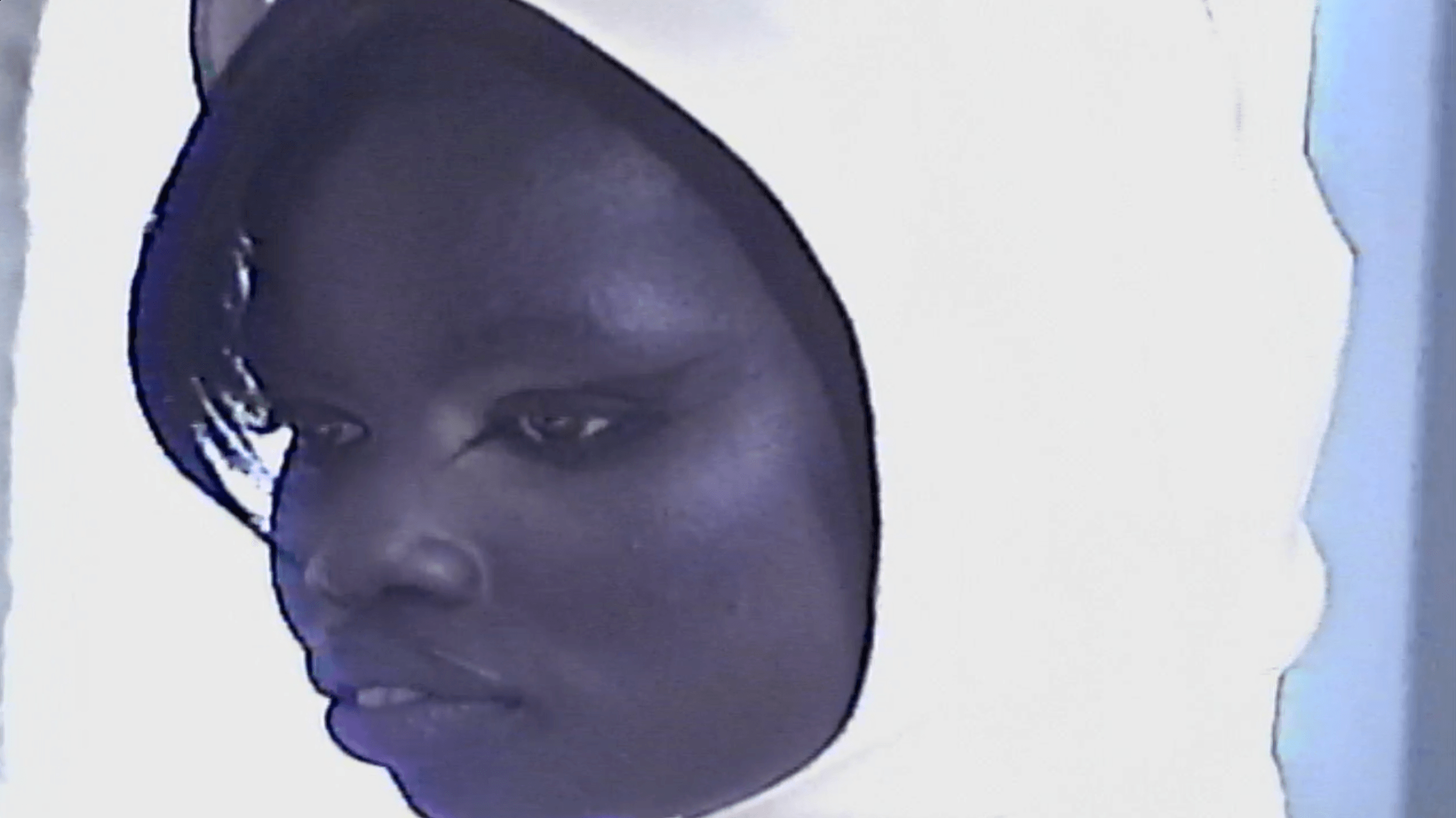
PHILLIP PYLE: What led you to open a physical store?
AMANDA MCGOWAN: We did online selling during the pandemic because we both needed to make money. We didn’t think about opening a physical store at the time, even though we’ve always dreamed about having one. New York real estate is so expensive that it didn’t feel possible. We did a pop-up with our last art show at Company because some of the themes in the film that we showed there had to do with vintage selling. That was the first time we did a physical in-person sale, and it did really well. We realized that it was more realistic than we thought.
MATTIE BARRINGER: It’s also hard to sell new clothes. We sell our designs, but it’s financially difficult to do that and produce new clothing—and since our designs are informed by a lot of things that we buy, the store is a natural container to display the stuff that we make, too. Not everything that we’re selling is related to what we’re making, but it is a more feasible way to sustain our other practices. It also played into this whole idea of what our label is called, “Women's History Museum.” We lived together and shared a tiny closet that we used to call “the museum,” even when it was this tiny rack of clothing.
PP: Whether it's through material sourcing or methods of collage and historical assemblage, your practice explores alternative archives and ways of visually recording history. How does this archival interest intersect with the business aspect?
MB: The vintage market is so oversaturated that sometimes I’m like, “Can we keep doing this?” But I do feel that we share an interesting mental visual language and that our curation is niche. It appeals to people in a way that might not be able to access in other spaces. And I feel that it’s buying into a piece of our world, which can be positive and ultimately bring people joy. I don’t know if that’s weird to say.
AM: Also, some of our aesthetic is this historical futurism, which ties into this idea of creating your own history. We carry antique clothing, but it’s not like I wish we could go back to olden times that were fucked up. We take things that we enjoy and place them in our other, fake reality.
MB: It’s about using fashion to create our own time-space continuum because fashion is like any other thing in history. It’s from a certain point of view and at, during any time, there could have been so many things happening that we don’t know about. I think of our fashion and work as a weird stopping of time and as a collage of new space and time.
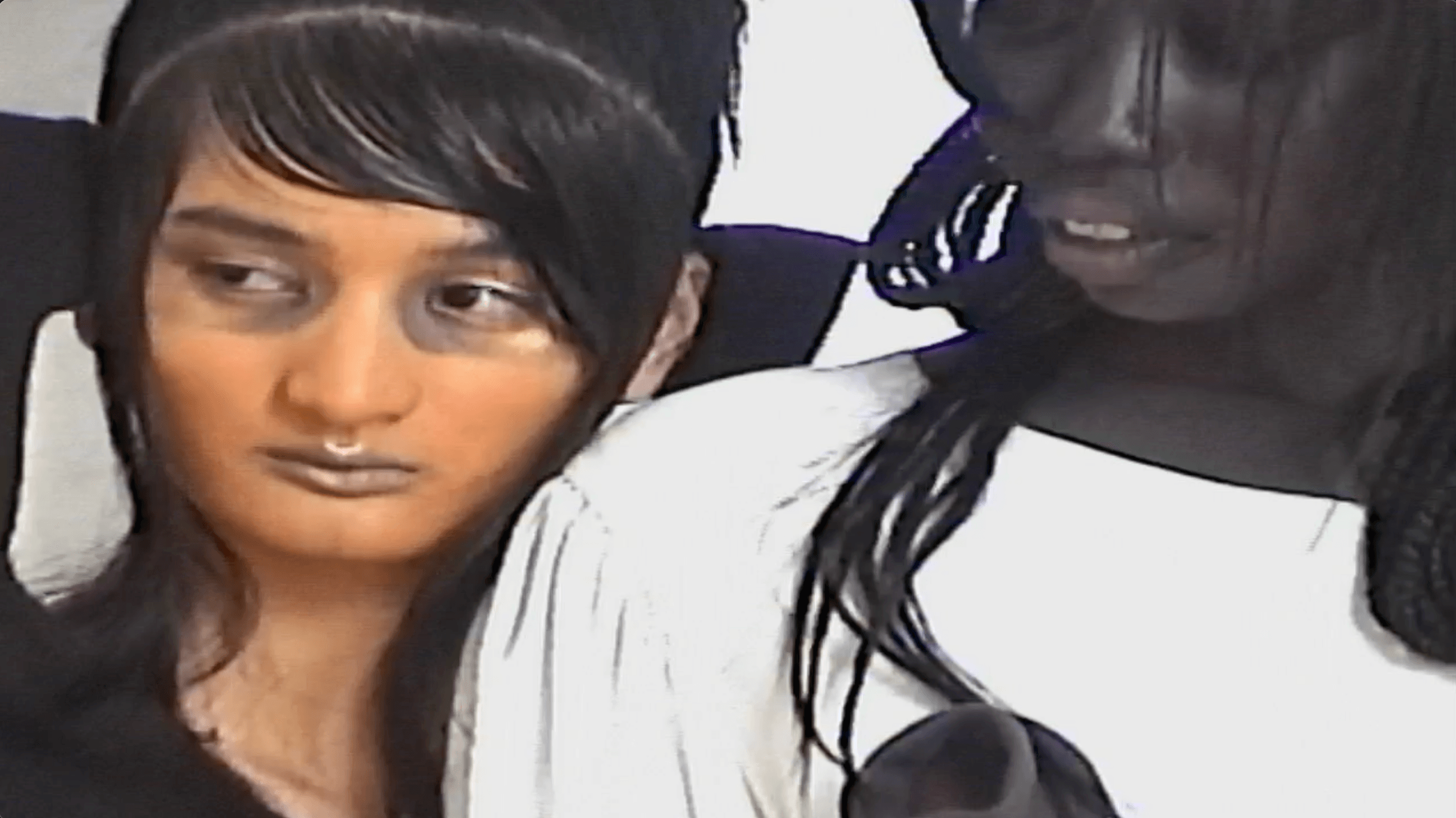
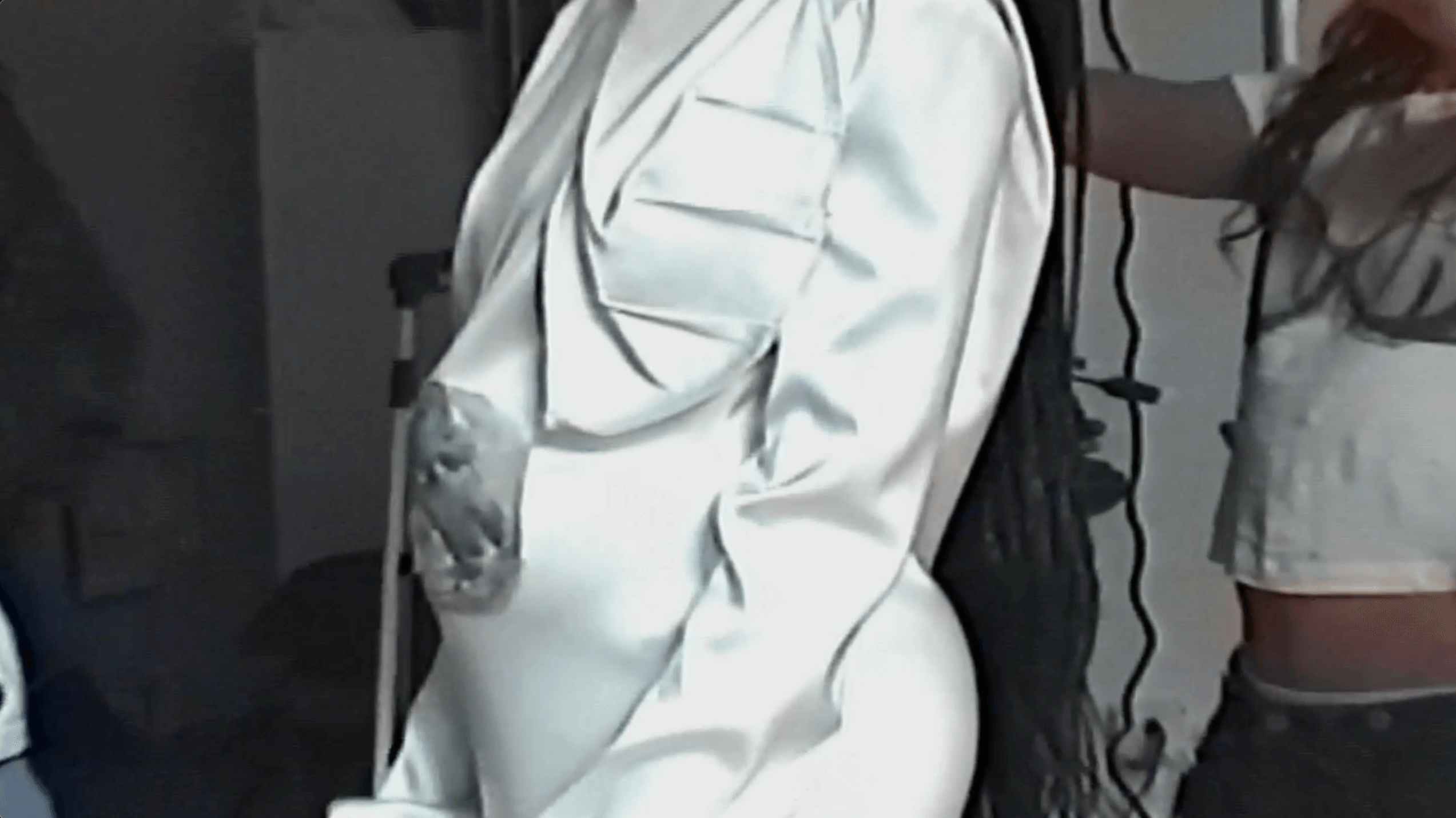
PP: The origins of the term “museum” can be traced back to the Greek for “site of the Muses.” The modern museum not only defeminizes this original function but also desacralizes it. Women’s History Museum, by contrast, seems interested in re-sacralizing the museum.
MB: It’s both re-sacralizing and taking away from institutional power, which I guess is a way of re-sacralizing something.
AM: It’s this faux pretentiousness where it’s a joke at the same time that we’re like, “No, but we’re serious.”
MB: We also think about fashion as being your own museum, your own body, or your own vessel as a way to talk about culture and present yourself in culture
AM: —Which is not commonly respected. Even at the Met, the Costume Institute is in the basement. I’m sure it’s one of the least funded areas of the museum. In the museum world, clothing is not held in the highest esteem compared to painting, sculptures, artifacts.
MB: The reason that contemporary fashion history is not respected is because it's the domain of women. We’re trying to insist on the medium’s importance through art and fashion, but we’re also trying to redefine what fashion can be because it is deservedly critiqued for being super exploitative.
PP: You don’t comfortably inhabit either worlds. Do you feel like art and fashion have caught up more to the way that you approach things since you first began, though?
AM: I feel like fashion has caught up more with the art element. When we first started, the art world was more appreciative of what we were doing, whereas now fashion fans are more interested in what we’re doing.
MB: There was an interest in what we were doing from the fashion world, too, when we started, but the way that the industry functioned was not something that we could do or sustain. We couldn’t supply the demand. People would invite us to do buying meetings, including Opening Ceremony, which we used to love of course. But when we went to this meeting, the people who were looking at our clothes didn’t understand what they were looking at. We both also had other jobs and couldn’t figure out an economic model that didn’t require us to take out huge loans, which wasn’t something we could do.
There is definitely truth to what Amanda said because we made stuff by hand, and there were intentional imperfections in our clothing. People didn’t like that at the time, whereas now that is in style.
AM: The handmade style was popular in the 90s, and then was gone until four or five years ago. Now everyone wants custom, DIY, or to make their own things.
Post-COVID is a whole new reality. Everyone got a makeover; all the kids are interested in having unique outfits. It’s a different landscape. This store also probably wouldn’t have been able to exist then.
PP: Your most recent NYFW runway show “Enfer” (French for “hell”) was an ode to New York City. Do you ever see New York as heaven for fashion?
MB: I don’t see anywhere as heaven for fashion. I do see New York as this space where you can self-actualize in terms of your own fashion. I don’t think it’s heaven in terms of receiving support as a designer, or seeing other designers that I’m obsessed with because the demands are so commercial to survive here. Walking down the street is like your own runway, which sounds really corny, but it’s this opportunity to see and be seen and to also still be anonymous and experiment with how you want to exist and present yourself.
I feel like the show title was in earnest. We were feeling dark about the world, about the things that we see in the city, the conditions of life deteriorating in this moment for pretty much everyone involved. The show was a love letter to New York, but not through rose-colored glasses.
AM: I’m from New York City, and it’s so much grimmer, structurally and in terms of extreme poverty. We’re also having a mental health crisis in the world, but especially in New York City. It feels like Gotham City. We’re aware of this and lean into it but, at the same time, we’re both interested in fantasy. Not everything’s dark and bleak and terrible, which I do feel is popular style now in fashion. We can also provide beauty in this abject reality.
The hellish parts of New York are the finances, the infrastructure, the terrible conditions a lot of people are in. The heavenly part is the people, which is highlighted in the show. Most of the models are friends of ours or New York figures that inspire us.
MB: In the dualism of heaven and hell, there’s this struggle that’s imposed by the surroundings, but in this collection there’s also this narrative of triumph and fighting—
AM: —In a literal way! That was why we were interested in athletic wear and boxing motifs. We always reference “God Warrior” [Marguerite Perrin] from Trading Spouses. She says something about feeing like you have to put on armor to leave the house.
MB: In “Enfer,” there’s also the dereliction of New York juxtaposed with the highfalutin, Greco-Roman, art deco elements of buildings you see when you look up. Cornices, for instance, played into some of the more sculptural metal pieces in the show. These elements of the city are so extremely in conflict with the reality of it sometimes. The mental identity of New York, too, is the “Excelsior” state. It’s “ever upward.”
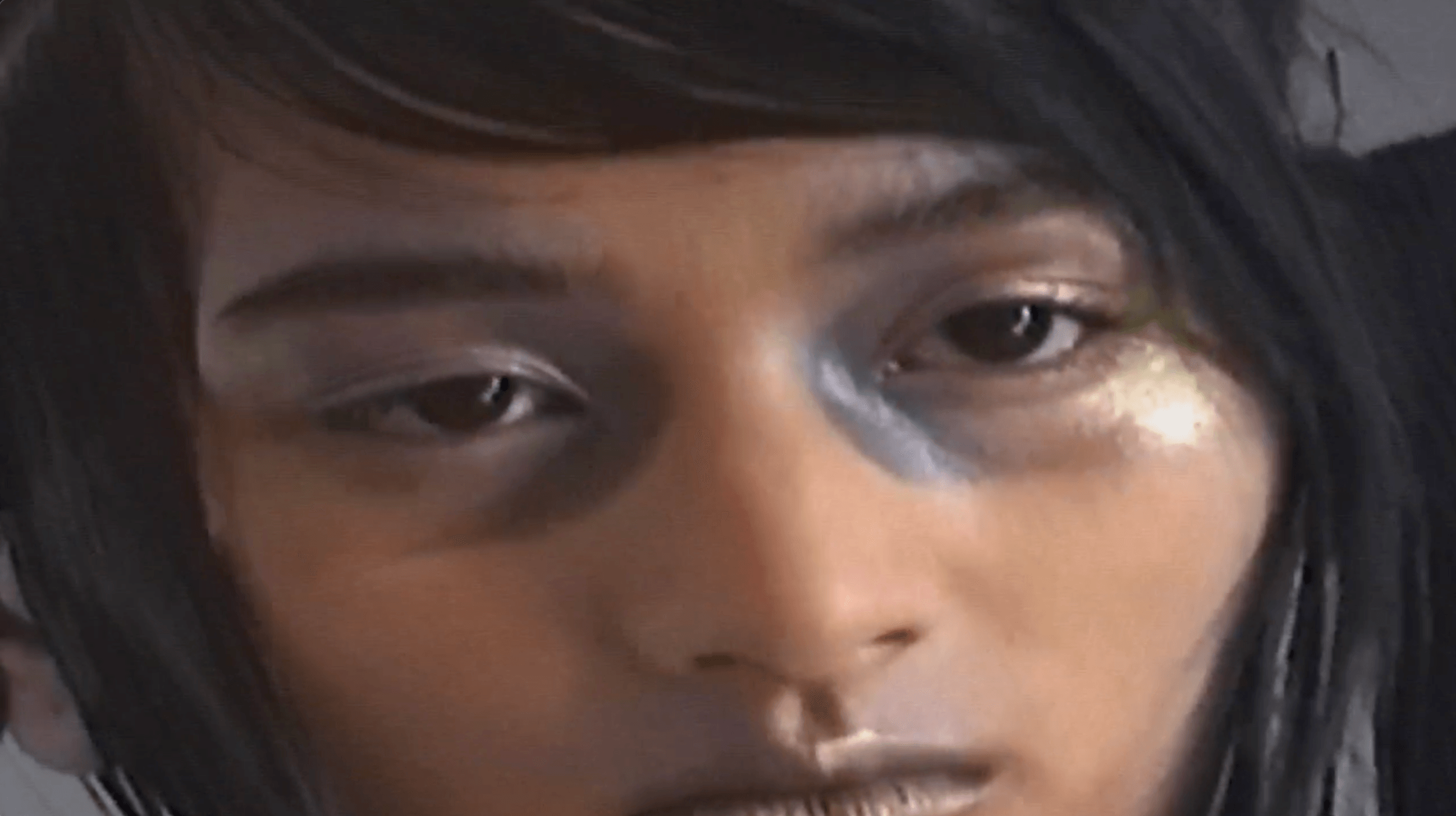
PP: When I was driving into the city over the Kosciuszko Bridge, I couldn’t see the Chrysler Building in the skyline anymore because all the new Billionaires’ Row skyscrapers shroud it. I cannot help but have this unhealthy nostalgia for the past when seeing these new, uglier skyscrapers. When you’re looking at forms of the past—and Amanda, you already talked about how you don’t want to live in those eras—how do you avoid becoming too obsessed with them?
MB: I don’t know if past eras are more fucked up than the one we’re living in. Obviously, there are certain things we can point to that are worse but, to me, it’s more about the object.
The Chrysler Building is not something that would be done anymore. There’s no time to make things as beautiful as they were in the past, which is where my interest in stopping time emerges. It’s more about the materiality of it. It’s not like I want to go back to the 1920s in New York. It’s just a beautiful building that would never exist today. There’s a rapture in looking at things that are unattainable or seem so beautiful that it’s hard to believe a human made it. Especially because everything is so prefab now.
AM: We’re both obsessed with beauty, especially the type of beauty that existed in other times, including architecture, clothing, processes that are obsolete. Everything made today is ugly. There’s still time and money going into these things, but I don’t know what happened to human consciousness that caused this shift to ugliness.
PP: You’re both self-taught designers, and Mattie, you’ve described yourselves as “bedroom artists.” Do you feel that this alternative entry point has given you a leg-up in terms of flexibility? You’re ironically well-suited for the multi-hyphenate economy.
MB: It’s not a calculated thing but, as you said, ironically perhaps so. There are times when I regret not going to art or fashion school but not having your creativity surveilled at a young age has its benefits as well.
Coming from a religious background, I was very repressed and confused in my identity while also being obsessed by different forms of visuality. Learning about semiotics and gender theory via one incredible Cinema Studies professor I had, Chris Straayer, blew open the floodgates of my brain in a way I’m extremely grateful for. Learning how to deconstruct the reality I had been indoctrinated in without the pressure of making things for an audience was probably how it was supposed to be. In the end, I’m glad I didn’t funnel myself into a single trade, and it led to me being able to meet Amanda and develop this shared language which is Women’s History Museum.
AB: Coming from a working-class background, doing something in fashion and art did not seem plausible in high school. The fact that we are self-taught allows us to be more open minded about what we create. We don’t feel tied to a particular medium perhaps because we didn’t spend years learning a specific skillset in a school setting. Usually, we try to express something and the medium is just the language we choose at that moment. Going to a rigorous art or fashion school seems to produce overthinkers and pretentiousness, so I feel grateful I didn’t go to art school.
Being self-taught has its cons, though. When working on a collection, we sometimes feel like cave women learning things from the beginning [laughs]. In terms of being a “bedroom artist,” working in bed will always be my preferred method of making things. As a girl growing up, the bed was the nucleus of my existence, and it still feels that way.
MB: What she said! Bed is the most important place in my world still, and always felt like a safe place to be creative and not surveilled.
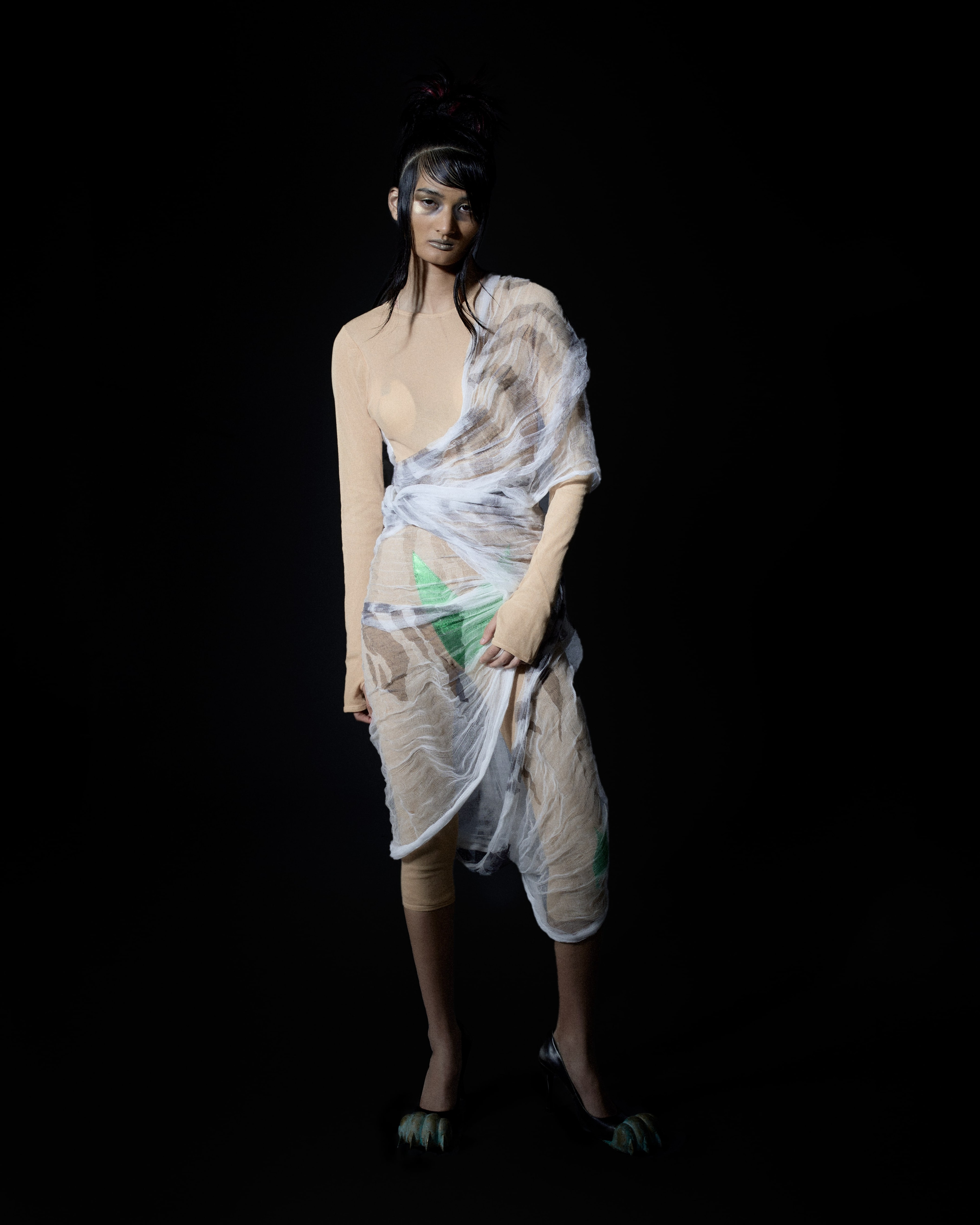
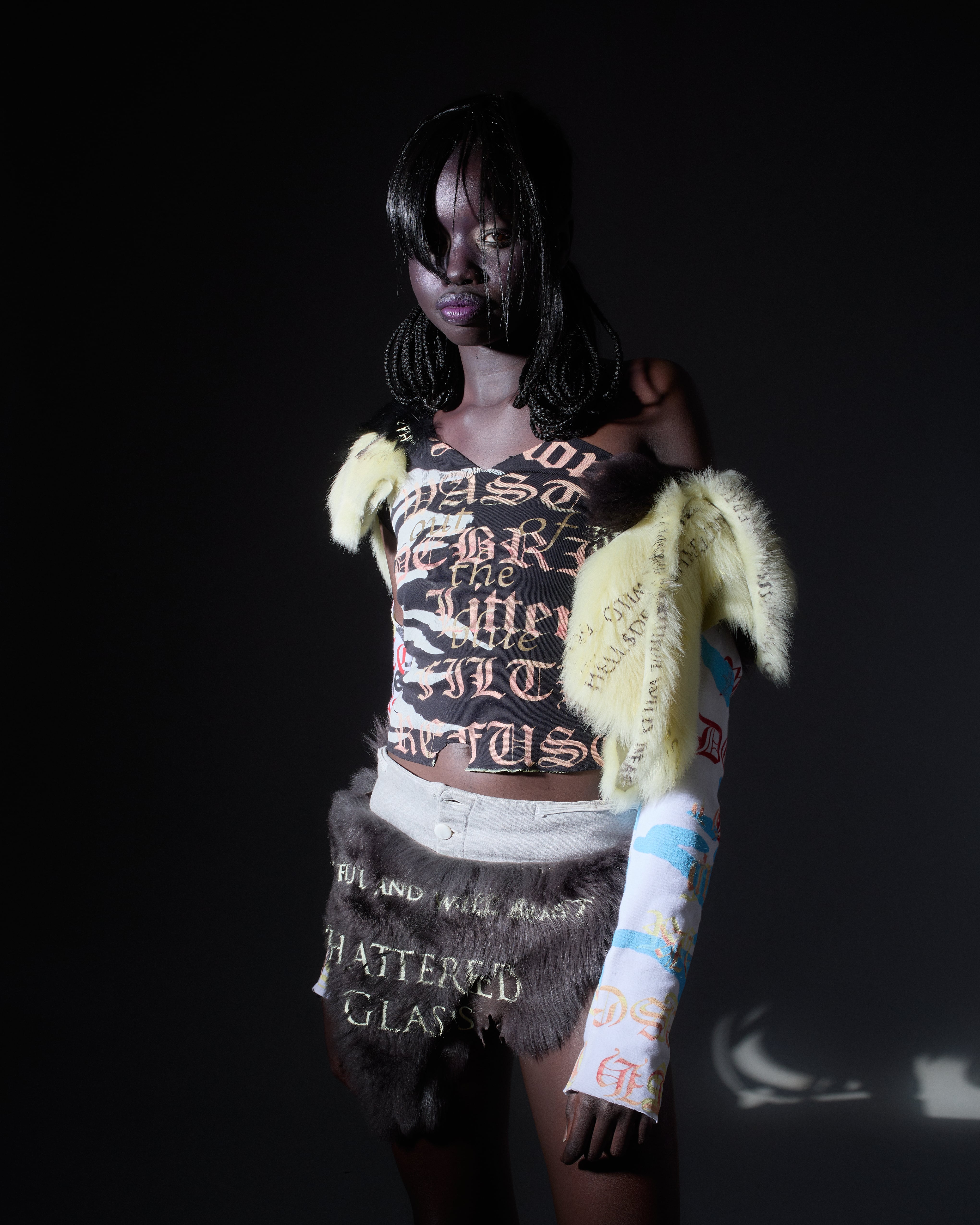
PP: In your 2022 show “The Massive Disposal of Experience,” which showed at both Company in New York and CCA in Berlin, mannequins were displayed wearing the designs worn by the main character, Experience, of a fashion film you also made. Even the stools in the gallery were made to look like magazine stacks, solidifying fashion as a kind of all-encompassing entity or hyperobject. Does fashion color everything you experience?
MB: Fashion definitely colors everything. It’s a filter I always need and have for reality. It does feel visceral and non-neutral to me in terms of how I dress and the clothing I like. I’m quite extreme in that way. I don’t relate to much of what is deemed as fashion, or even would think of it as such, since I relate to it so specifically.
Our relationship to fashion is at once lifesaving but also poisonous. Sometimes it feels like what we make is votive of this feminine domain of fashion but also an acknowledgement of the problematic and compromised frame it sits inside of.
AM: Fashion has always been a hyperobject for me, but I’d use the word “fashion” as a loose term to describe what I’m interested in at any given moment—which is personal and not based on trends or the fashion system. Since a young age—and I feel like Mattie was the same way—I’ve used aesthetics as a means of communication, expression, safety, and escape. It’s unconscious, but I feel like having every aspect of my life in fashion is safety.
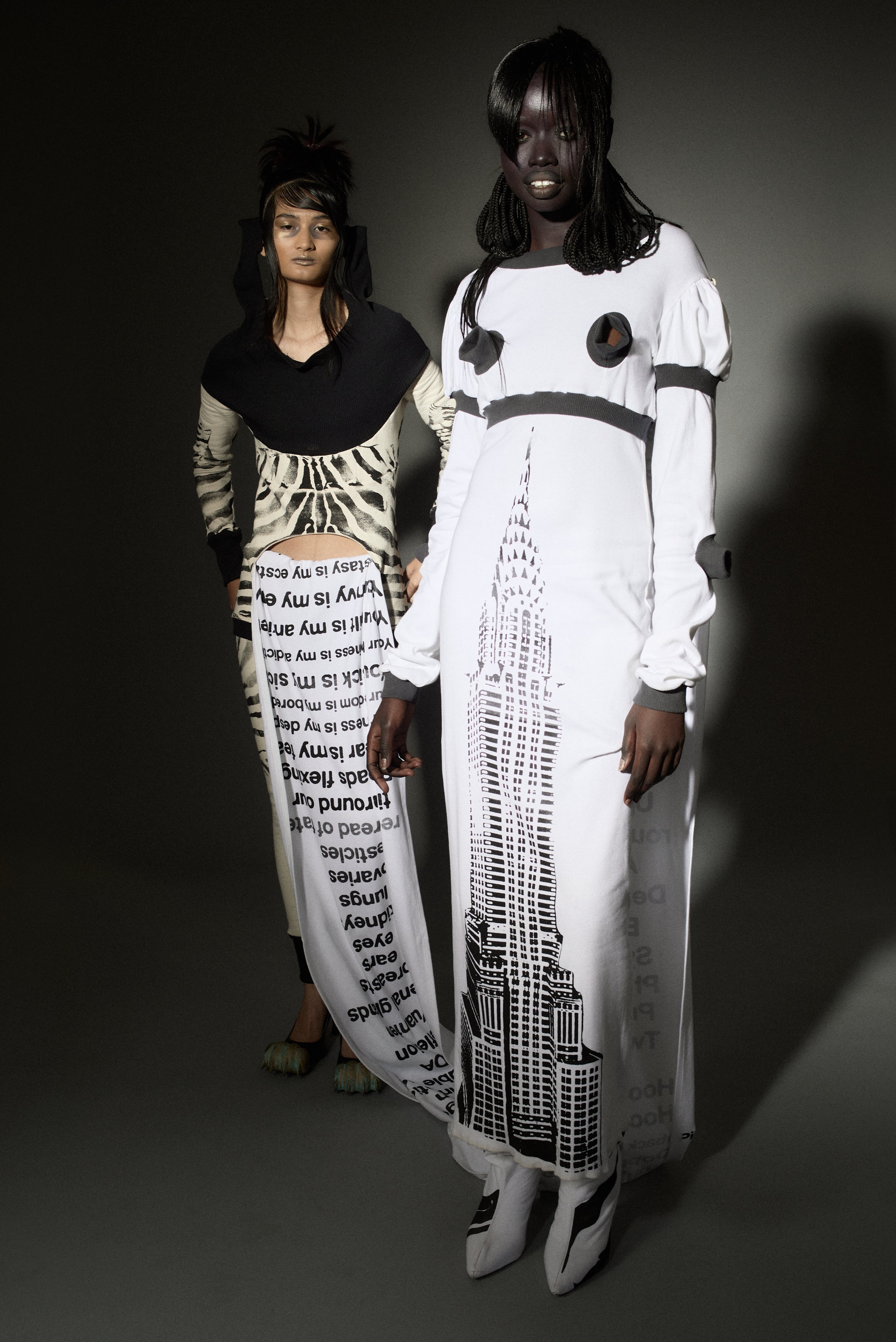
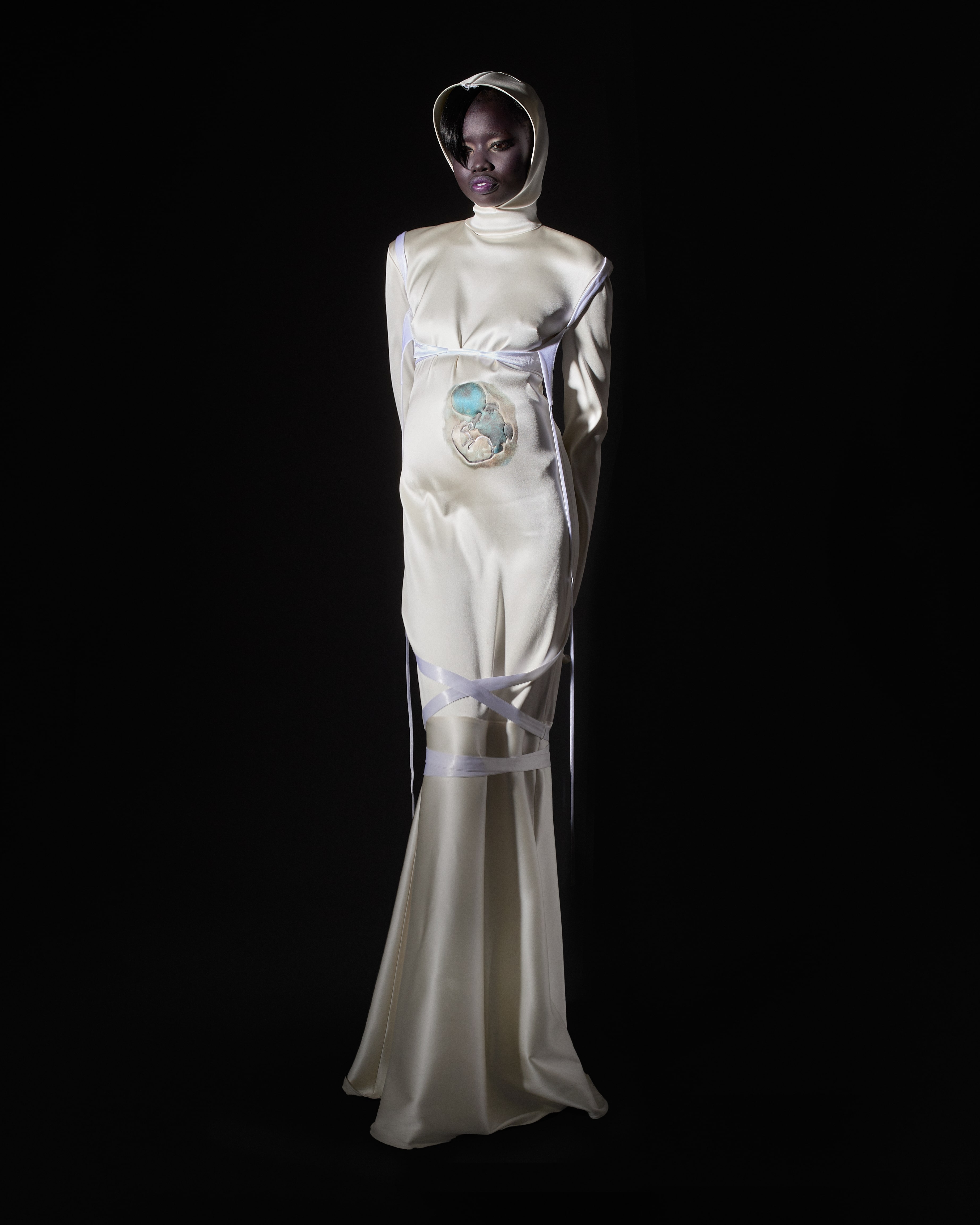
Credits
- Text: PHILLIP PYLE
- Photography: BEN TAYLOR
- Film Stills: ASREEN ZANGANA
- Hair: SONNY MOLINA
- Makeup: NAT CARLSON
